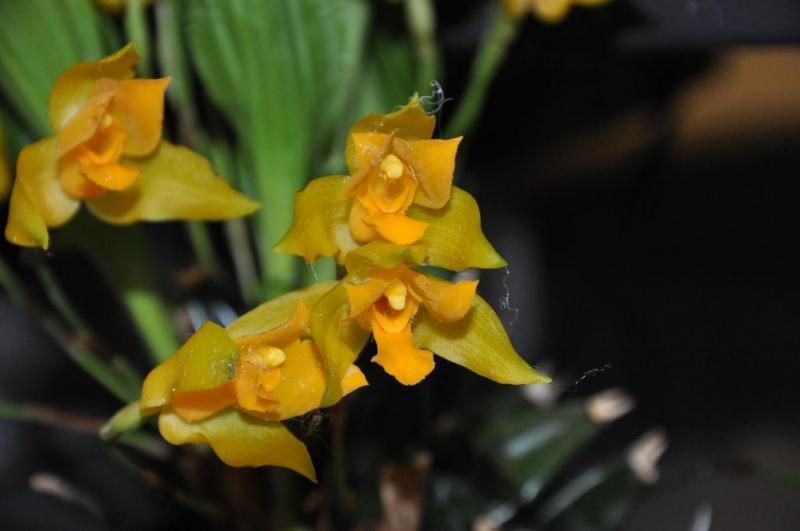Lycaste bradeorum
Also known as: The Brade Brother's Lycaste in the subfamily: Epidendroideae
Native to: Costa Rica Departamento de Jinotega - Nicaragua Departamento de Matagalpa - Nicaragua
General Information
The Brade Brother's Lycaste is a medium to large sized sympodial cool to warm growing epiphytic orchid belonging to the sub family Epidendroideae native to Costa Rica and Nicaragua. It is named after the Costa Rican Botanists 20th cen.
Plant Description
Sympodial. Each new growth has numerous erect leaves that grow to 0.4-0.8cm long. Pseudobulbs grow to 2.5-7cm
Substrate(s)
- Coarse
- Fine
- Bark
- Charcoal
- Spaghnum Moss
- Perlite
Care Notes
These orchids like to be kept on the dry side, but may need to be watered daily during warm weather, and prefer a well draining mix or also do well mounted, provided they can be watered regularly.
These are quite a forgiving orchid, there are no special requirements to get this orchid to flower, just good care and consistent conditions. Larger plants may be more fussy and can react poorly to change; a poorly timed repotting, a pest infection or an unusually hot day can set them back for a couple of years. However, even plants that have been treated poorly can thrive, and if they are set back they often recover much stronger then they would otherwise be.
Climate
These orchids thrive in humid, cool, shady conditions with good airflow, they will be found under dense forest canopies where they will receive moderate sun exposure throughout the year.
When cultivated they will thrive in a cool, sheltered environment such as a shaded greenhouse, or if grown in cooler climates they can be grown in the garden in areas where they are protected from frost and receive shade throughout the year, though they may be able to tolerate some morning sun during winter.
Grows at low to high elevations. Rainfall ranges from 5mm to 175mm per day, heaviest in September and lightest in February. Humidity ranges from 63% to 81%, highest in October and lowest in March. Temperature ranges from 14C to 29C, highest in April (18C to 29C) and lowest in January (14C to 24C).Fertiliser
Apply liquid based fertiliser per recommended directions. They can benefit from a high phosphate fertiliser leading up to flowering season, followed by a high nitrogen fertiliser when new growth appears, and a balanced fertiliser in other times. These orchids can also tolerate slow release fertiliser applied 1-2 pellets per cup (250ml) of media.
Use balanced fertiliser during Spring and Summer. Apply fertiliser regularly at half strength year round. Use a high Nitrogen fertiliser during Spring and Summer. Use a high Phosphorous fertiliser during Summer.Potting
It's best to observe the root system when repotting and use that as a guide:
A plant with a short root system will do better in a shallower pot with a fine mix, or mounted on fern or cork supplanted with a good amount of moss or similar material.
A plant with a long root system often does well in a pot filled with moss or fine media, mixing in perlite and charcoal is always beneficial to reduce the likelihood of the mix becoming soggy and keeps it fresh.
A plant with a coarser long root system can be potted in a deeper pot, but with 2/3 coarse material such as bark, expanded clay, or coco chips and topped with moss or similar material. This will allow the moisture to remain inside the pot but give the roots air as well.
Use water retentive media such as moss to prevent roots from drying out quickly This plant does very well in baskets or suspended pots This plant does well mounted to Cork slabs. Repotting is best done annually.


